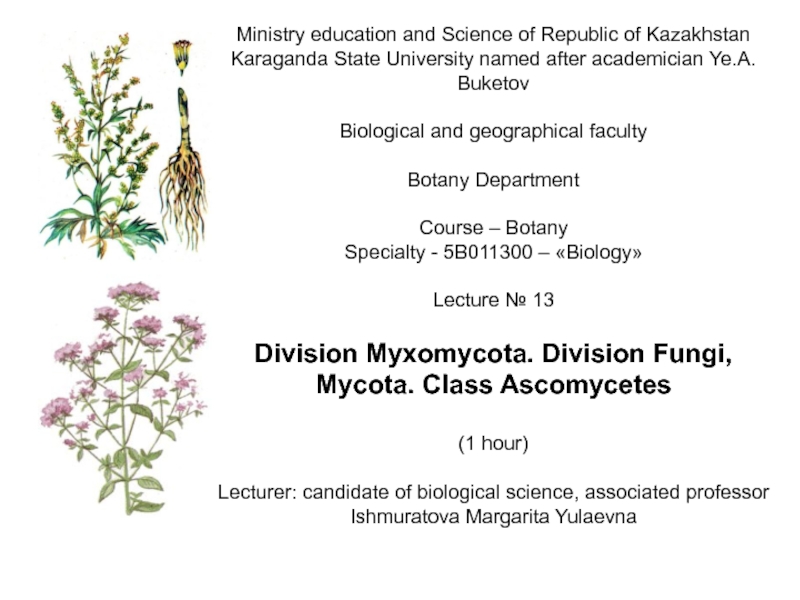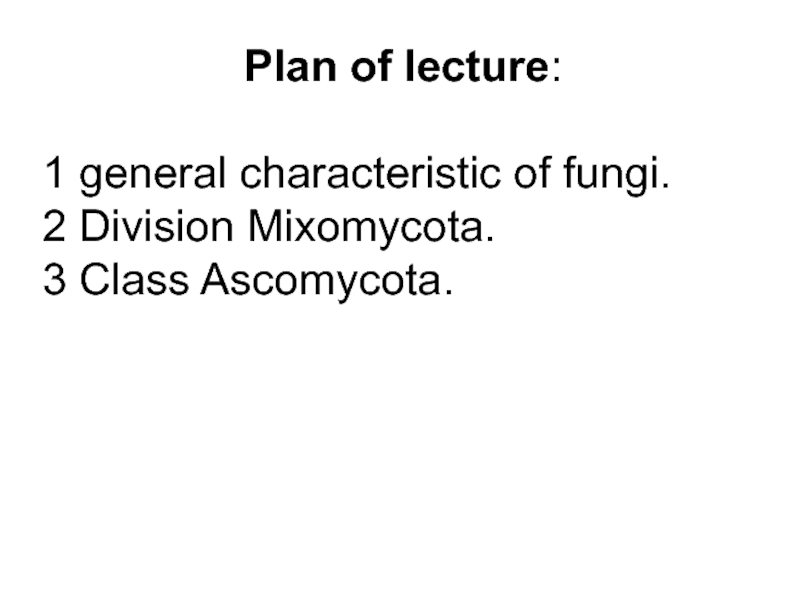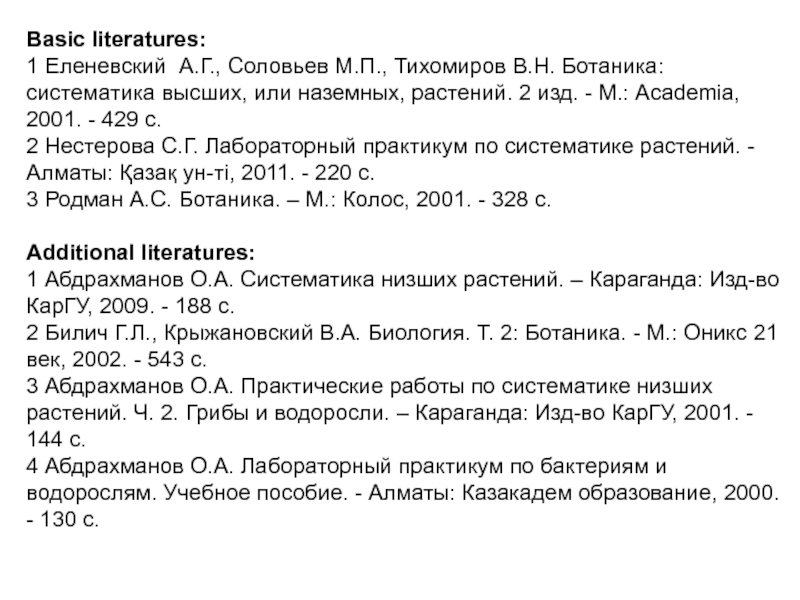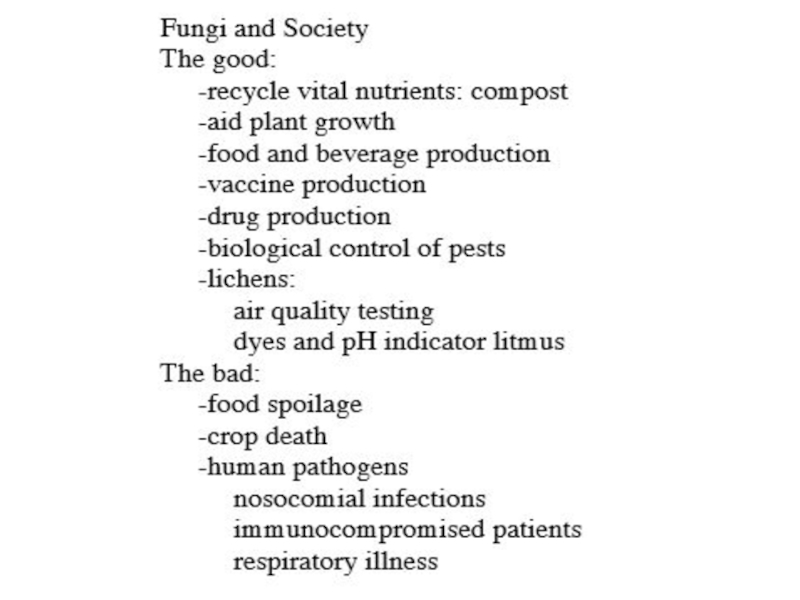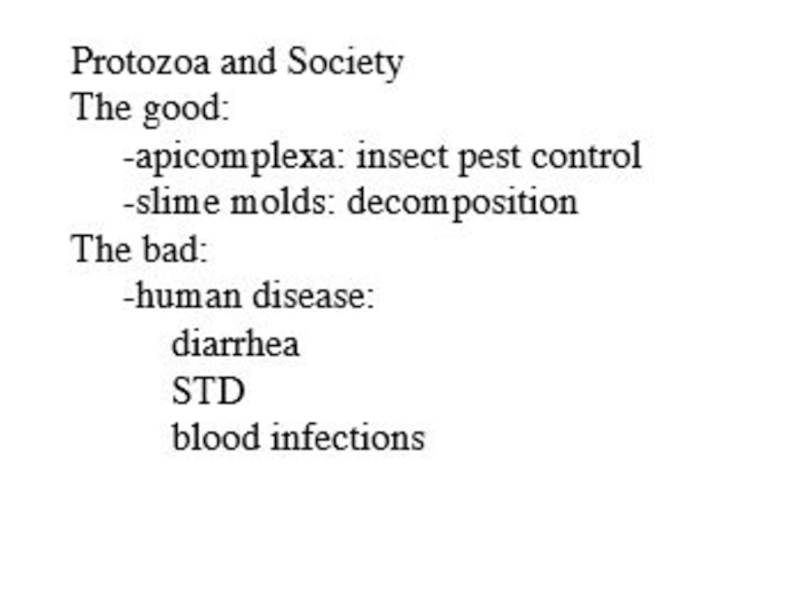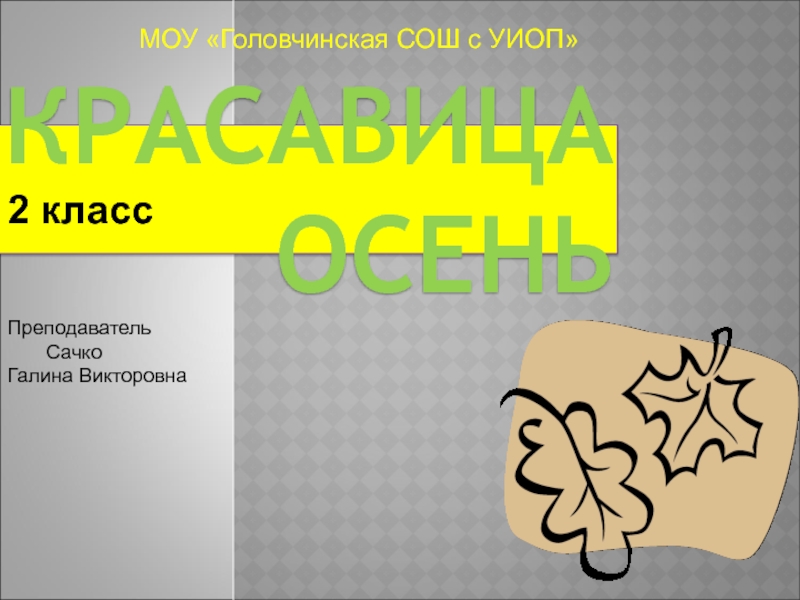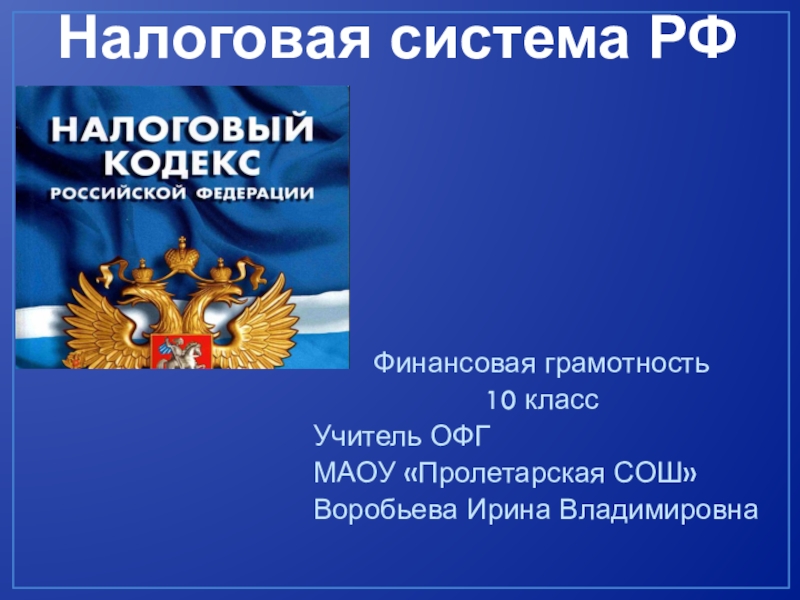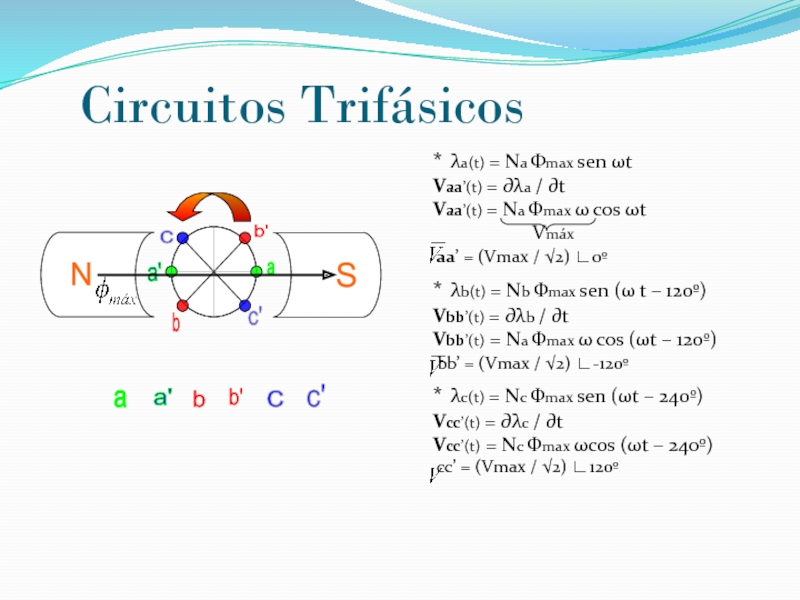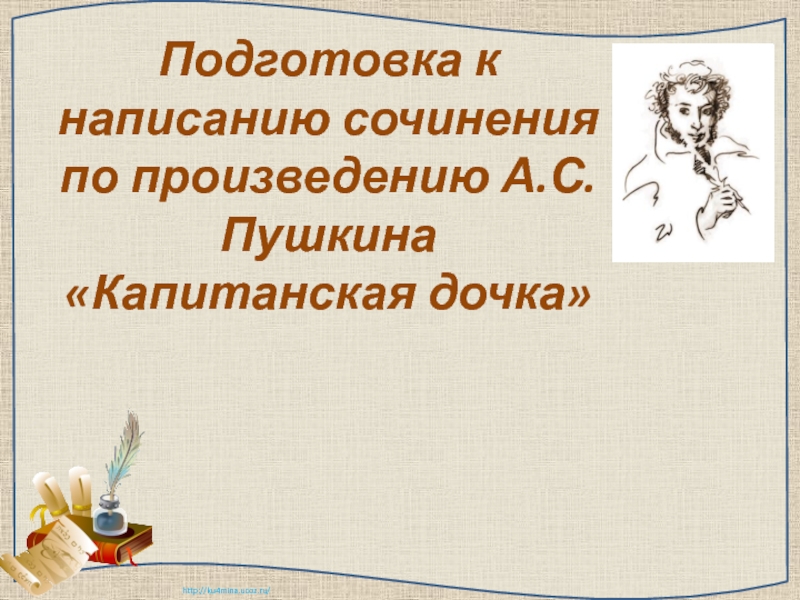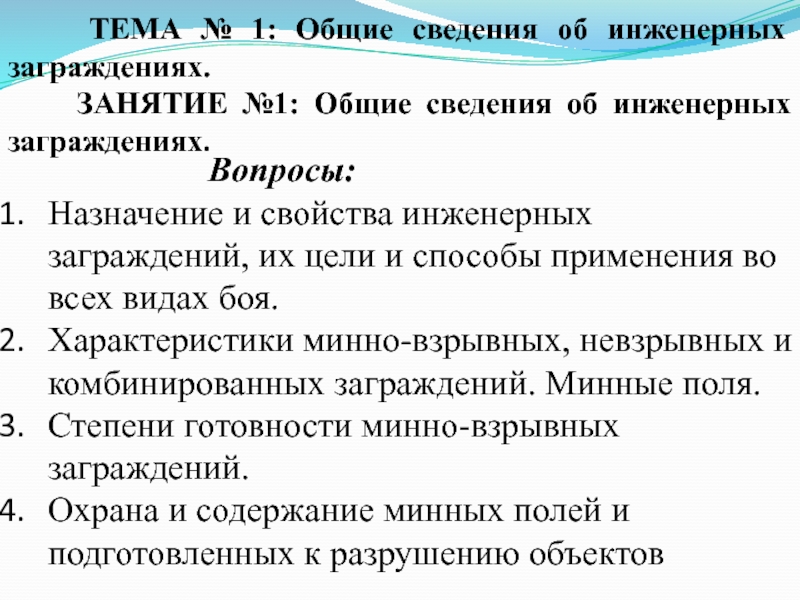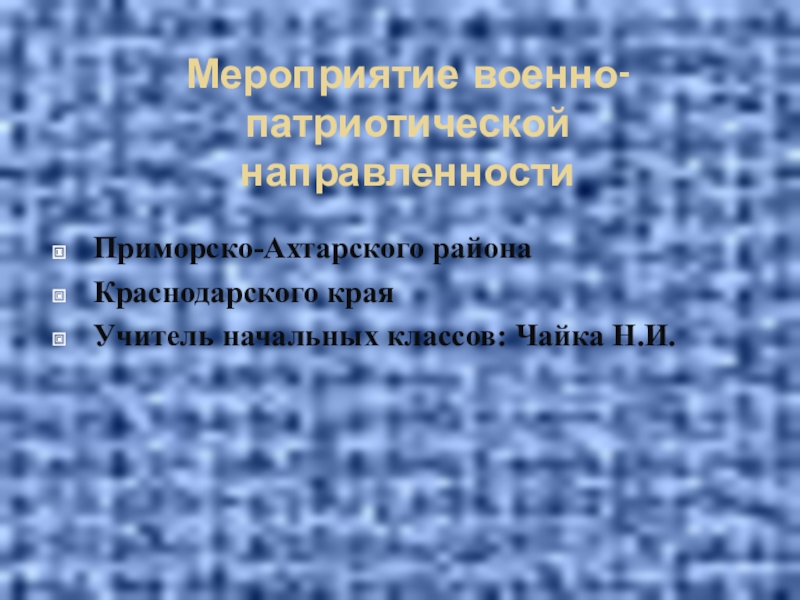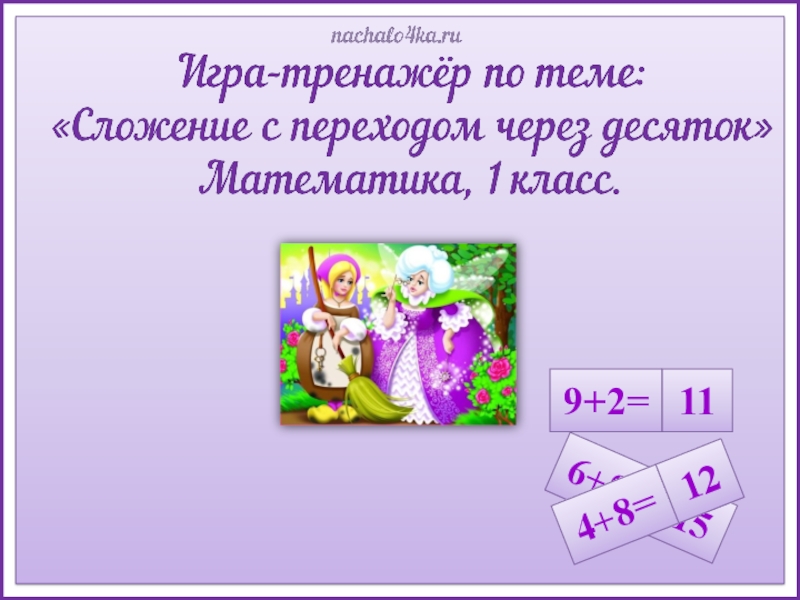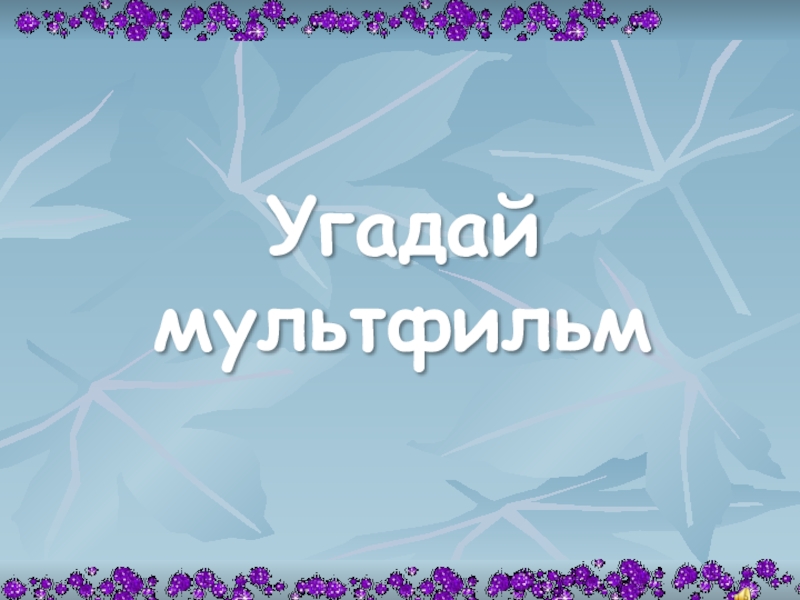Слайд 1Ministry education and Science of Republic of Kazakhstan
Karaganda State University
named after academician Ye.A. Buketov
Biological and geographical faculty
Botany Department
Course – Botany
Specialty - 5В011300 – «Biology»
Lecture № 13
Division Myxomycota. Division Fungi, Mycota. Class Ascomycetes
(1 hour)
Lecturer: candidate of biological science, associated professor
Ishmuratova Margarita Yulaevna
Слайд 2Plan of lecture:
1 general characteristic of fungi.
2 Division Mixomycota.
3 Class
Ascomycota.
Слайд 3Basic literatures:
1 Еленевский А.Г., Соловьев М.П., Тихомиров В.Н. Ботаника:
систематика высших, или наземных, растений. 2 изд. - М.: Academіa,
2001. - 429 с.
2 Нестерова С.Г. Лабораторный практикум по систематике растений. - Алматы: Қазақ ун-ті, 2011. - 220 с.
3 Родман А.С. Ботаника. – М.: Колос, 2001. - 328 с.
Additional literatures:
1 Абдрахманов О.А. Систематика низших растений. – Караганда: Изд-во КарГУ, 2009. - 188 с.
2 Билич Г.Л., Крыжановский В.А. Биология. Т. 2: Ботаника. - М.: Оникс 21 век, 2002. - 543 с.
3 Абдрахманов О.А. Практические работы по систематике низших растений. Ч. 2. Грибы и водоросли. – Караганда: Изд-во КарГУ, 2001. - 144 с.
4 Абдрахманов О.А. Лабораторный практикум по бактериям и водорослям. Учебное пособие. - Алматы: Казакадем образование, 2000. - 130 с.
Слайд 4Fungi are a group of organisms that lack chlorophyll, roots,
stems, leaves, and flowers. Once considered plants, they are now
classified in their own group. Fungi reproduce by means of spores, are usually filamentous, have definite cell walls, and live a saprophytic or parasitic existence. As saprophytes they share with bacteria the role of decaying the remains of dead organisms, and as parasites they cause diseases in plants and animals. The large fleshy fungi, such as mushrooms, toadstools, bracket fungi, and puffballs, are familiar to everyone who has walked the Illinois countryside. Other fungi include the morels, truffles, earthstars, and bird’s nest fungi. Most fungi are microscopic and not visible to the naked eye, such as molds, mildews, yeasts, rusts, and smuts. Mushrooms produce a fruiting body that consists of a stalk surmounted by a broad, umbrella-shaped cap. The reproductive spores are produced on the sides of gills located on the underside of the cap. The mushroom is only one part of the body of the fungus: think of a mushroom as the apple on the tree. The remainder consists of an extensive mass of threadlike filaments (hyphae) that grow hidden in the soil or other substrate.

Слайд 6Technically, there is no difference between a mushroom and a
toadstool. By tradition, the term “mushroom” refers to edible species,
some highly prized for their delicious flavors and aromas. The term “toadstool” is used for poisonous species, which produce toxic compounds that can cause illness or death. Since both edible and poisonous species can occur together and can resemble each other, there is great danger of amateurs confusing safe and toxic species. Only people who are thoroughly familiar with the technical identification of mushrooms should collect and eat wild species.
Слайд 7Mushrooms can be found throughout most of the year, but
the largest number appear with the cool moist weather of
autumn. This diversity will last until temperatures fall below freezing. Warm spring temperatures combined with moist weather bring out the second largest number of fleshy fungi, including many gilled and pore fungi, morels, and puffballs. In late spring and summer, the number of fleshy fungi drops to a low point. A cool spell in August, accompanied by showers, will bring out large numbers of puffballs and pore fungi. However, the return of hot weather will quickly reduce the numbers to a few scattered specimens.
Слайд 8Fungi, besides being tasty additions to pizza, are important additions
to our medicines and food. Many antibiotics, including penicillin, streptomycin,
terramycin, aureomycin, and chloromycetin, were originally produced by fungi. Yeasts carry out the process of fermentation, which makes possible bread, alcoholic beverages, and vinegar. Fungi are also important in the ripening of certain kinds of cheese, such as Roquefort, Camembert, Brie, and Stilton.
Слайд 9Types of sexual process of mushrooms
Слайд 16Yeast
1 – cell of yeast, 2 – beginning of
budding, 3 – budding (creation of pseudo mycelium), 4 –
bag with spores
Слайд 17Control questions:
1 Which signs do separate fungi from other
groups of organisms?
2 Describe the structure of fungi cell.
3 Which
life forms do Ascomycotes have?
4 Which common signs for plants and fungi?
5 What does ecological role of fungi?
6 Which nutrition compound do fungi produce?
Слайд 18Test questions:
Practical uses of mushrooms:
А) food product
В) medical preparation
С)
for fermintation
Д) production of metals
Е) for textile industry
F)
As building materials
In life circle of yeast we can separate …. stages:
А) 1
В) 2
С) 3
Д) 4
Е) 5
